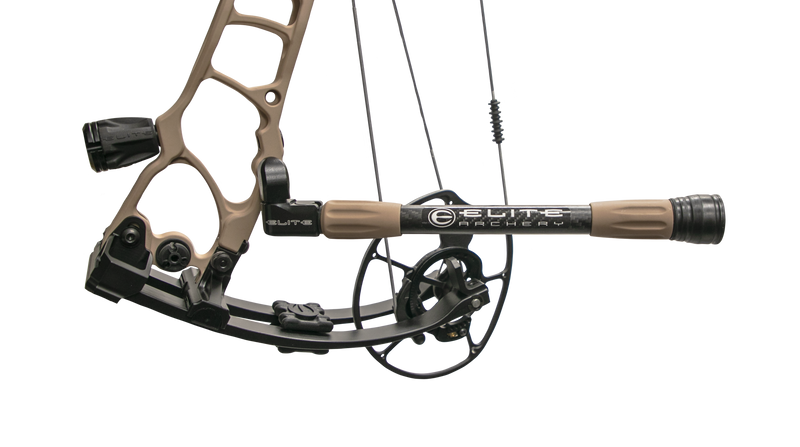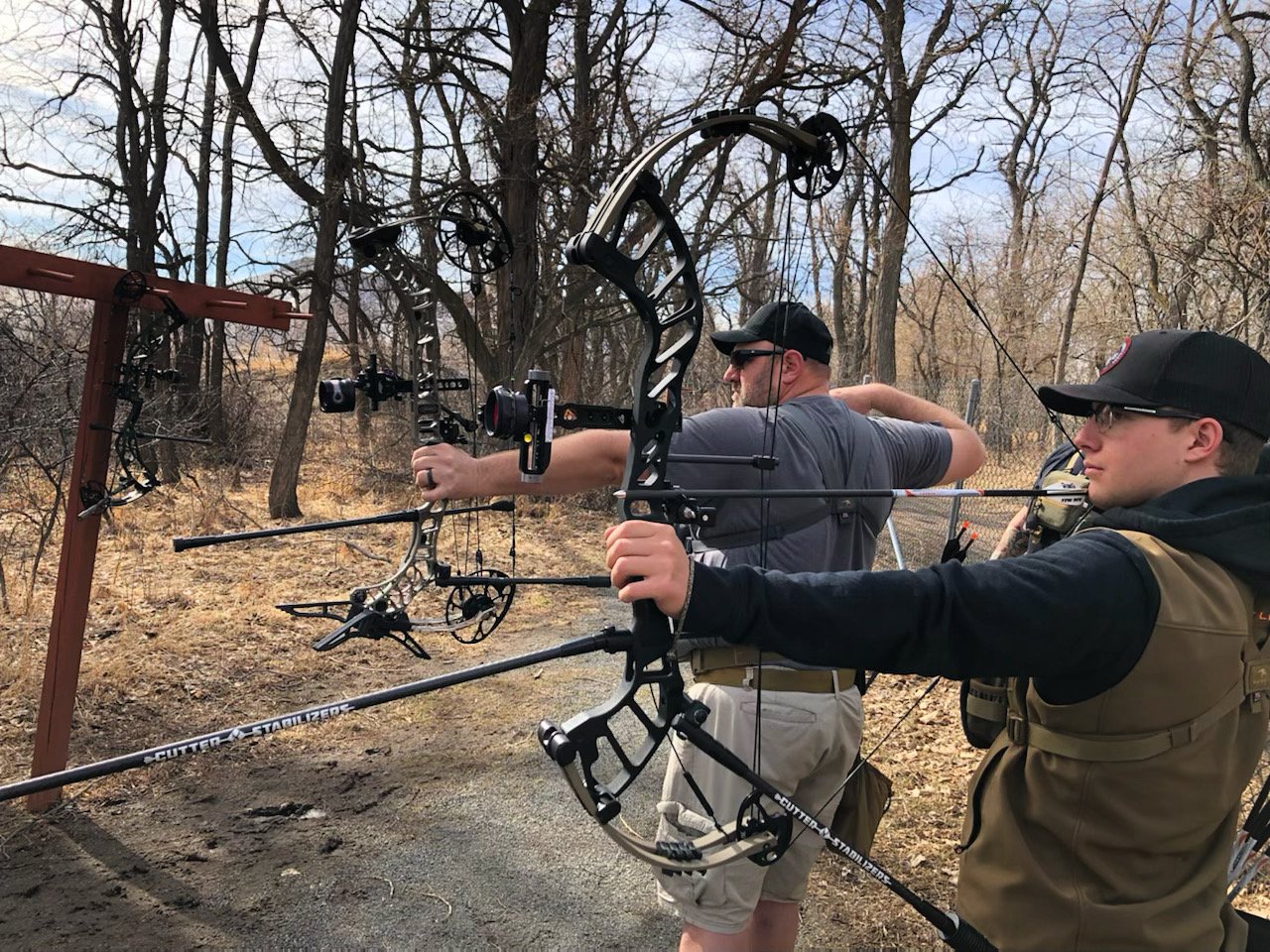Unleash Your Full Possible with the most up to date Bow Stabilizer Innovations
Unleash Your Full Possible with the most up to date Bow Stabilizer Innovations
Blog Article
Increase Your Archery Efficiency: The Ultimate Overview to Bow Stabilizer Configuration
Enhancing your archery performance calls for a precise method to every facet of your devices setup. Amongst the various parts that add to accuracy and stability, the bow stabilizer plays a crucial function in improving your shot implementation. Comprehending how to optimize your bow stabilizer setup can cause significant renovations in your overall accuracy and uniformity on the array or in the field. As we dive right into the details of picking the ideal stabilizer weight, placing, and tweak techniques, you will reveal the secret to unlocking your full potential as an archer.
Comprehending Bow Stabilizers
In the realm of archery tools, the function and function of bow stabilizers stand as important components for enhancing shooting precision and stability. Bow stabilizers are made to decrease bow torque, minimize vibrations, and assist in holding the bow steady throughout the intending and release process. By connecting a bow stabilizer to the riser of the bow, archers can experience enhanced balance and lowered hand shock, causing even more consistent and exact shots.
The main purpose of a bow stabilizer is to moisten any type of resonances that occur upon releasing the arrow. This decrease in vibration not just enhances the shooter's comfort yet additionally helps maintain emphasis and control throughout the shot cycle. Furthermore, bow stabilizers aid in counterbalancing the weight of devices connected to the bow, such as sights, quivers, and arrow relaxes, making sure optimal weight circulation for improved stability.
Recognizing the technicians and benefits of bow stabilizers is essential for archers wanting to tweak their shooting performance and attain better precision on the array or in the area.

Choosing the Right Stabilizer Weight
Selecting the appropriate weight for your bow stabilizer is an essential element of optimizing your archery arrangement for enhanced capturing performance. The stabilizer weight straight influences just how effectively the stabilizer lowers vibration and maintains your bow during the shot. When picking the best stabilizer weight, it's important to consider your shooting design, bow balance, and individual preferences.
Lighter stabilizers, usually considering between 3-6 ounces, are preferred by archers that prioritize ability to move and quick target purchase. These stabilizers are ideal for seekers or those that shoot in tough terrains where flexibility is essential. On the various other hand, heavier stabilizers, ranging from 8-12 ounces or even more, are chosen by target archers looking for optimum security and minimized bow movement. The included weight aids hold the bow steadier during the intending process and decreases the impacts of torque on the bow.
Ultimately, the finest stabilizer weight for you will rely on your shooting objectives and choices. Trying out with different weights and discovering the one that supplies the optimum equilibrium of security and ability to move is vital to boosting your archery efficiency.
Putting Up Your Bow Stabilizer
To properly mount your bow stabilizer, ensure that you have all the necessary devices and adhere to these detailed directions for a effective and secure setup. Start by recognizing the front stabilizer bushing on your bow riser. The majority of bows have pre-threaded openings for stabilizer setup. Next, apply a small amount of bowstring wax to the strings of the stabilizer screw to avoid it from loosening during usage.
Meticulously thread the stabilizer into the front bushing by hand, making certain not to cross-thread it (bow stabilizer). Once the stabilizer is snugly in location, make use of an appropriate wrench to tighten it securely. Prevent over-tightening, as this can trigger damage to the bow or stabilizer
After mounting the stabilizer, check to go to this website ensure it is straight and straightened with the bow. Some stabilizers come with flexible weights or dampeners; adjust these according to your choices and shooting style. Last but not least, test the acquiesce ensure the stabilizer is effectively reducing vibration and boosting your shot uniformity.
Adjusting Stabilizer Position for Accuracy
After installing the bow stabilizer securely, enhancing its setting is critical for boosting precision in your capturing. The position of the stabilizer can substantially influence the balance and security of your bow throughout the shot cycle. To change the stabilizer for ideal accuracy, start by trying out different settings. Moving the stabilizer better to the riser can assist minimize the bow's general weight circulation, possibly enhancing your aiming stability. On the other hand, expanding the stabilizer additionally out can enhance the bow's forgiveness and lower the results of torque on the shot.
When changing the stabilizer position, think about the kind of shooting you do. For target archery, a longer stabilizer placed further out could be beneficial for added security throughout the aiming procedure. On the various other hand, seekers might like a shorter stabilizer for much better maneuverability in the area. Remember to make small changes and check your configuration after each change to determine the ideal position for your capturing design and preferences.
Fine-Tuning Your Stabilizer Configuration

In addition, think about the positioning of any kind of dampeners or weights along the stabilizer pole. Moving these components closer to or better from the riser can modify the stabilizer's general result on your bow's equilibrium. Fine-tuning these details can help in reducing resonance, lessen hand shock, and boost overall control throughout the shot implementation.
Frequently reassess your stabilizer arrangement as your capturing technique progresses to ensure it continues to complement your form and capturing objectives. By finetuning your stabilizer setup with his explanation accuracy and treatment, you can enhance your bow's performance and boost your archery skills to brand-new heights.
Conclusion
To conclude, optimizing your bow stabilizer arrangement is critical for boosting your archery performance. By understanding the purpose of stabilizers, selecting the appropriate weight, properly mounting and positioning the stabilizer, and tweak its setup, you can enhance your accuracy and consistency in capturing. Take the time to try out different configurations and modifications to discover the configuration that works best for you and helps you achieve your archery goals.
Bow stabilizers are designed to lessen bow torque, minimize resonances, and help in holding the bow stable during the intending and launch process. By connecting a bow stabilizer to the riser of the bow, archers can experience enhanced balance and reduced hand shock, resulting in even more regular and specific shots.

The stabilizer weight directly affects just how effectively the stabilizer decreases resonance and maintains your bow during the shot. bow stabilizer. By comprehending the function of stabilizers, picking the ideal weight, properly placing the stabilizer and installing, and tweak its configuration, you can improve your accuracy and consistency in shooting
Report this page